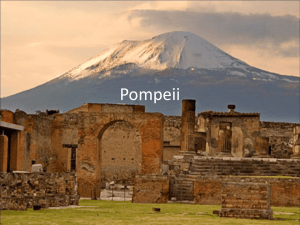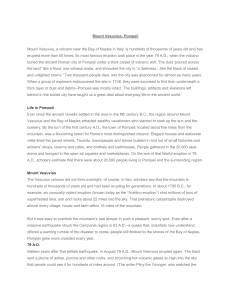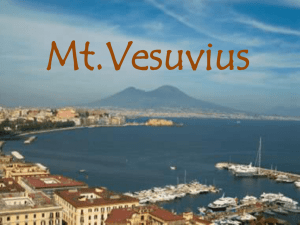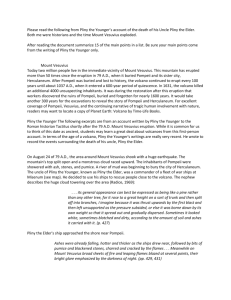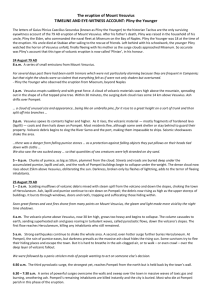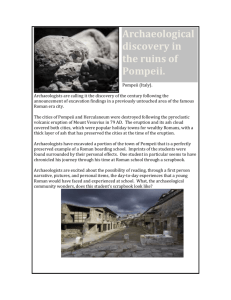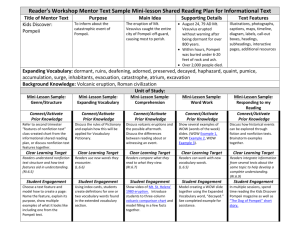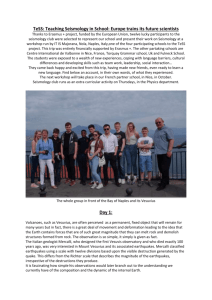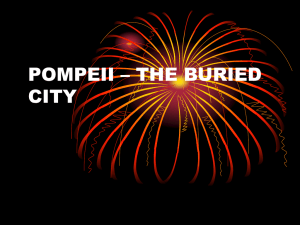Pompeii and Mount Vesuvius WebQuest
advertisement
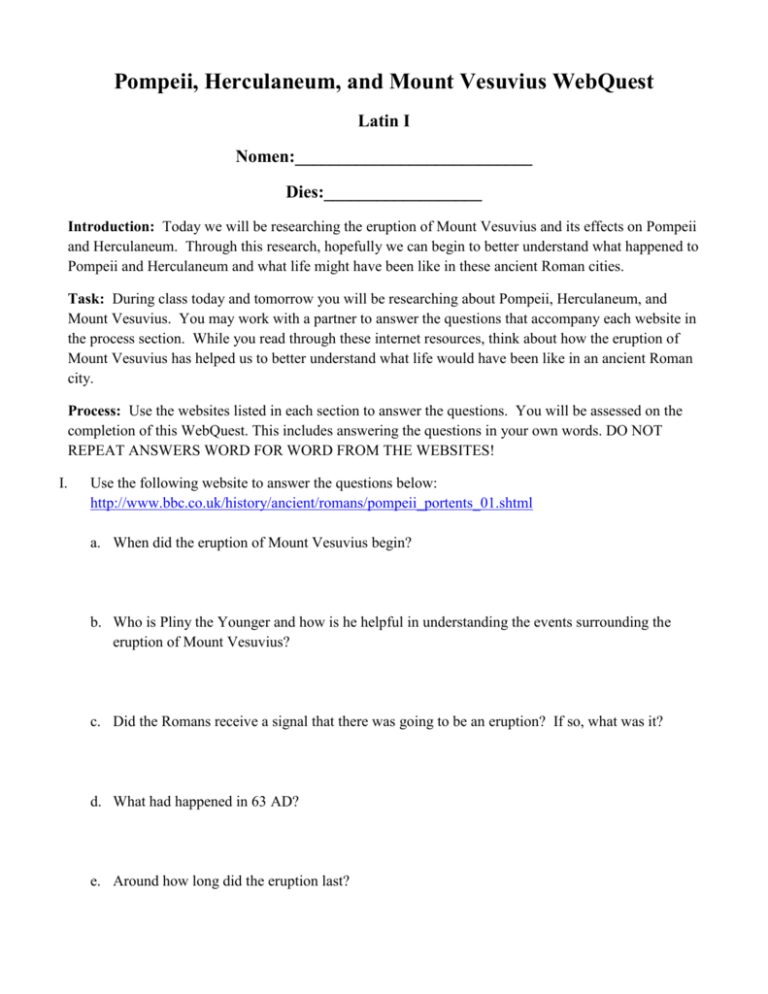
Pompeii, Herculaneum, and Mount Vesuvius WebQuest Latin I Nomen:___________________________ Dies:__________________ Introduction: Today we will be researching the eruption of Mount Vesuvius and its effects on Pompeii and Herculaneum. Through this research, hopefully we can begin to better understand what happened to Pompeii and Herculaneum and what life might have been like in these ancient Roman cities. Task: During class today and tomorrow you will be researching about Pompeii, Herculaneum, and Mount Vesuvius. You may work with a partner to answer the questions that accompany each website in the process section. While you read through these internet resources, think about how the eruption of Mount Vesuvius has helped us to better understand what life would have been like in an ancient Roman city. Process: Use the websites listed in each section to answer the questions. You will be assessed on the completion of this WebQuest. This includes answering the questions in your own words. DO NOT REPEAT ANSWERS WORD FOR WORD FROM THE WEBSITES! I. Use the following website to answer the questions below: http://www.bbc.co.uk/history/ancient/romans/pompeii_portents_01.shtml a. When did the eruption of Mount Vesuvius begin? b. Who is Pliny the Younger and how is he helpful in understanding the events surrounding the eruption of Mount Vesuvius? c. Did the Romans receive a signal that there was going to be an eruption? If so, what was it? d. What had happened in 63 AD? e. Around how long did the eruption last? II. Use the following website to answer the questions below: http://www.history.com/topics/pompeii a. What type of people did the area around Mount Vesuvius attract? b. Around how many people are estimated to have lived near Mount Vesuvius when it erupted? c. What is a pyroclastic surge? d. When was Pompeii rediscovered and what made this discovery so special? III. Using the website below, click on the different sections of “Vesuvius” in order to answer the following questions: http://www.harcourtschool.com/activity/pompeii/pmpVesu.html a. “What did the eruption look like?” i. Who is the eruption named after? ii. What happens during the plinian stage of a volcanic eruption? iii. How long did it take for the “boiling mud” to reach Herculaneum from Vesuvius? b. “What kind of volcano is Vesuvius?” i. Describe a composite volcano. c. “Why is Vesuvius located where it is?” i. Where is Vesuvius located geologically? ii. IV. How does a volcano form? Use the website below to explore different locations within Pompeii: http://www.phschool.com/atschool/california/webcodes/history_interactive/mxp1011/common_player.html a. List three interesting facts about the locations in Pompeii you explored: V. Using the website below, look through the first 8 images and information sections in the Pompeii Art and Architecture Gallery by clicking next and scrolling down to read the information provided with each location or piece of art: http://www.bbc.co.uk/history/ancient/romans/pompeii_art_gallery_01.shtml a. Garden of the House of the Vettii i. What were the names of the owners of the house and who were they? ii. What is so special about this house today and why is it helpful for us to better understand Roman daily life? b. Amphitheatre i. Who built the amphitheatre and why? ii. How many people could the amphitheatre hold? c. Thermopolium i. What was a thermopolium? d. Bakery i. How many bakeries have been found in Pompeii so far? e. Forum i. What buildings were located in or around the forum in Pompeii? f. Detail of the Alexander mosaic from the House of the Faun i. What does this mosaic depict? ii. How big is the mosaic and around how many tesserae were used? g. Lararium i. What is a lararium? ii. VI. What are lares? Within this article, scroll down and read only the sections entitled “Pompeii as a Source” and “Pompeii Today” in order to answer the questions below. http://www.bbc.co.uk/history/ancient/romans/pompeii_rediscovery_01.shtml a. Why are the archeological sites at Pompeii and Herculaneum so important to better understanding ancient Roman cities and daily life? b. What is the biggest danger today for these ancient sites? Conclusion: Now that you have a better understanding about the history surrounding Mount Vesuvius, Pompeii, and Herculaneum, we can use this new knowledge to aid us in our translation of Pliny’s letter about the eruption of Mount Vesuvius. I hope you had fun on your journey to better understand the importance of Mount Vesuvius, Pompeii, and Herculaneum!

